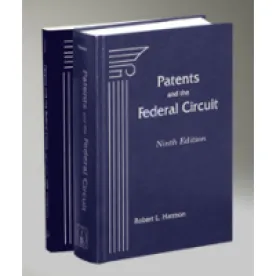Decision Date: October 20, 2014
Court: Northern District of Illinois
Patents: D564,834 and D609,045
Holding: Defendants’ proposed claim construction is REJECTED Opinion:
Plaintiff Weber-Stephen Products LLC sued defendants Sears Holding Corporation and Sears, Roebuck and Co. for infringement of U.S. Design Patent No. D564,834 (“the ’834 patent”), entitled “Shroud for a Barbecue Grill,” and U.S. Design Patent No. D609,045 (“the ’045 patent), entitled “Grill.” Weber also alleged trade dress infringement and infringement of a utility patent. After the parties briefed the issue of claim construction, the court held an oral hearing and construed the claims. Sears sought to exclude fasteners from the scope of the claimed design in both patents and also sought to exclude a horizontal bar from the scope of the claimed design in the ’045 patent.
Both the ’834 patent and the ’045 patent include fasteners on a riveted band along the outer edges of the grill shroud. Sears asked the court to construe the claims as excluding this feature from the claimed design, arguing that the fasteners were primarily functional. But Weber maintained that the fasteners were ornamental. In support of its proposed exclusion, Sears relied on Richardson v. Stanley Works, Inc., 597 F.3d 1288 (Fed. Cir. 2010) as standing for the proposition that functional elements must be excluded from claim scope in a design patent during claim construction. Sears also submitted extrinsic evidence to show the functionality of fasteners. Neither the legal nor the evidentiary support, however, persuaded the court.
The court gave two reasons why Sears’s reading of Richardson was too narrow. First, because Richardson involved a bench trial, the district court was able to combine the claim construction and the merits into one proceeding. This allowed the district court to consider both claim construction and functionality together even though they “pose entirely distinct questions that will generally be answered by different evidence at different stages in the litigation.” Second, the court explained that Richardson mandates only that the trial court must filter out functional elements from the claimed design. But “it does not mandate when that separation” must occur.
Sears’s evidentiary support was likewise deficient. The functional aspect of fasteners, such as threaded screws, is not shown in the ’834 or ’045 patents. In fact, the court suggested that based on the figures alone a person of ordinary skill in the art may even conclude that the fasteners are fake and therefore purely ornamental. Accordingly, the court used its discretion to decline to exclude the fasteners from the claimed design at this stage of the litigation. But the court left open the possibility of excluding this feature later in the case if Sears succeeded in proving its functionality.
Sears further sought to exclude a horizontal bar from the scope of the claimed design of the ’045 patent. The horizontal bar at issue borders the lower, side edges of the grill cart in Figures 4 and 5 of the ’045 patent. Sears argued that the horizontal bar does not appear in Figure 1 and the figures are therefore inconsistent and also that the horizontal bar was rejected as new matter during prosecution and Weber therefore surrendered this element through prosecution history estoppel.
With respect to the internal inconsistency, the court acknowledged that Figure 1 was inconsistent with Figures 4 and 5. But it concluded that this inconsistency was not a matter of claim construction, but rather invalidity. Therefore, the court explained, Sears may raise this issue as an invalidity contention in a later substantive motion.
During prosecution, the Examiner rejected original Figure 1, which included a horizontal bar, because the horizontal bar was not visible in Figure 1A from the parent application. The replacement Figure 1 had a different perspective and did not include the horizontal bar. Sears argued that this amounted to prosecution history estoppel because Weber had surrendered this element to obtain the ’045 patent. But the court rejected Sears’s argument regarding prosecution history estoppel for two reasons. First, the image of Figure 1A was of poor quality causing the Examiner’s rejection to be ambiguous. Second, the horizontal bar is still visible in Figures 4 and 5. Thus, there was insufficient evidence to establish prosecution history estoppel and the court did not exclude the horizontal bar from the claimed design.
Accordingly, the court refused to exclude any features from the scope of the claimed design of the ’834 and ’045 patents at this stage of the litigation and rejected Sears’s proposed claim construction.





 />i
/>i

